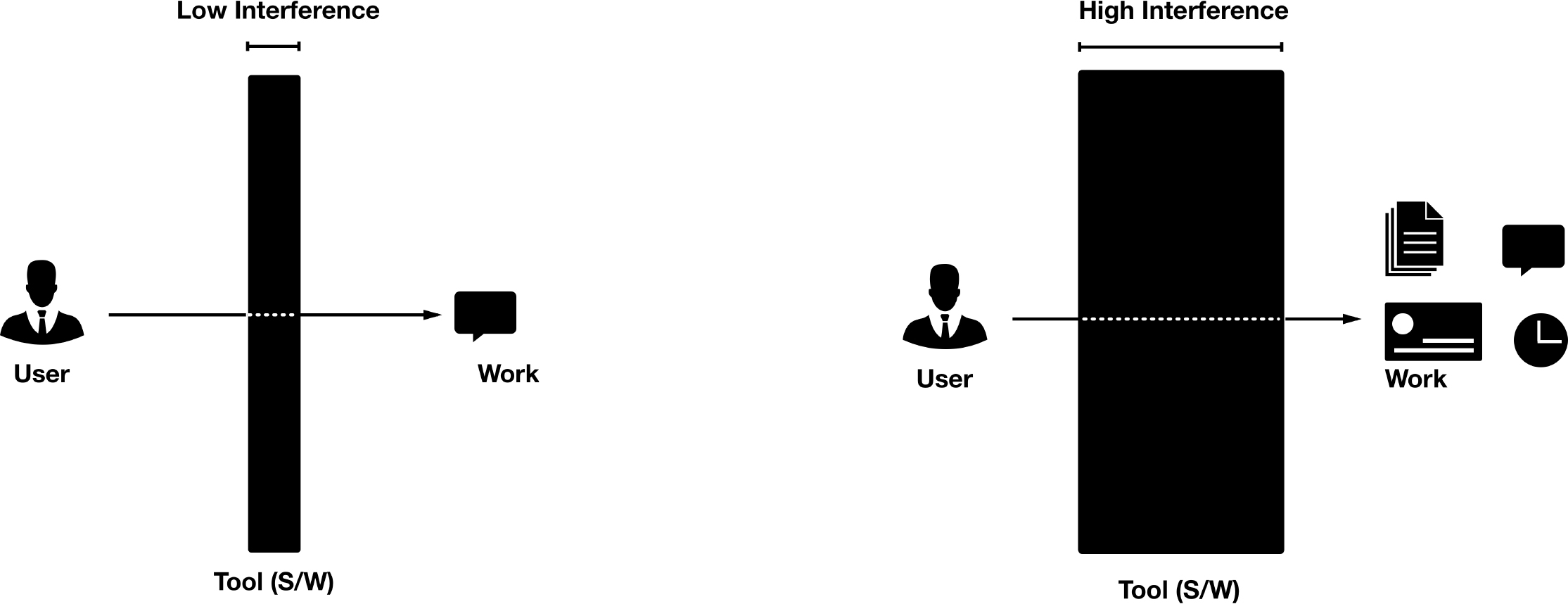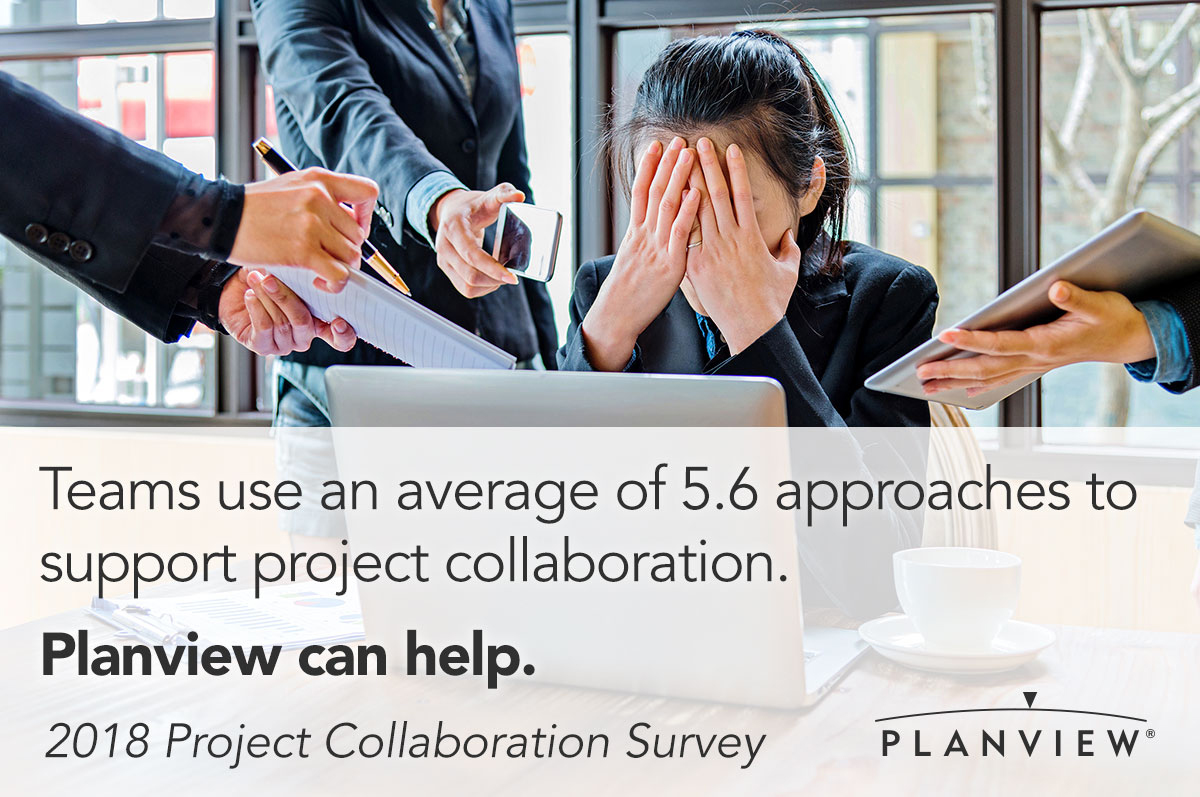
Work as we know it has transformed radically over the past few decades and so have the tools that we used to get work done. The focus for this evolution was how to get work done faster and in a more efficient way leading to the development of complex tools. But it required time to learn how to use those tools, curate, and moderate them. This added that unwanted layer that took away focus from the actual work that a person needs to do. Now with the advent for advanced technologies like artificial intelligence (AI) and machine learning (ML), the focus is changing. The impetus is still on how to get things done faster and more efficiently but at the same time remove that unwanted layer of moderation that took away the focus for the goal.
This blog highlights what this shift in focus means for people and businesses including:
- Understanding software interference and how it affects work
- Shifting perception and surrounding
- Analysis of business processes to identify right opportunities to fit
Software Interference
When you use a particular tool or software application, you have to spend time to figure out how that tools works, tips and tricks, etc. Simply put the time you spend learning a new tool or software, navigating around it to figure out workflows, and administrating or curating it is known as Software Interference. As the name suggests this is an unwanted interference that you would rather avoid and focus on the things that really matter. The higher the interference higher is the time to learn it leading to a lesser quality of experience and overall lack of satisfaction.
Now how does this software interference grow? With businesses demanding tools that are highly capable to address their business needs, software applications keep adding new capabilities to satisfy the consumer need. This definitely adds value to the customers but at the expense of unwanted interference.
The below image illustrates how with growing capabilities, software interference also grows.

For businesses this means unproductive time, lack of employee satisfactions and tends to be counterproductive for the organisation. Hence the goal should be to have tools or applications that are capable at the same time have the software interference reduced to the minimum.
Shift in Perception and Surroundings
This isn’t the first time when we are talking about artificial intelligence helping us out in our businesses. This dialogue has happened before but never really reached fruition because the environment wasn’t primed for it. There was more skepticism for the repercussion than anticipation for the opportunity. It was all most a decade ago that these efforts subdued in what we today call as AI winter.
But present day is a totally different landscape with individuals and organisations opening up to the possibility of assistive technologies in their lives and work. The recent acceptance of technologies like Apple’s Siri, Microsoft’s Cortana, and Google’s Assistant, etc. shows that people are actually curious to explore the new possibilities and what it could mean from them. As these technologies permeate the day-to-day living, it creates a new enhanced experience for these individuals and as it happens these individuals tends to seek similar futuristic experience at their workplaces as well. The below image shows how the individual experience of interacting with software tools has evolved.
If you remember an entire generation of workforce shifting from paper filings to computer maintained digital records, it wouldn’t be far fetched to claim that this might be the case with these assistive technologies as well. And the businesses well prepared for this will attract the cream of the workforce.
Another case for businesses to look toward assistive technologies is employee productivity. The amount of time employees spend dealing with administrative, reporting and moderating aspects of a software application is the time spent on non value generating work. You would rather have your best brains focus on solving organizational problems that brings in revenue and delegate rest of the logistics to an assistive agents. Also in a competitive environments where businesses are expected to be fast, agile, and respond to market forces in a jiffy, it’s assuring to know that the routine work is already handled by a reliable assistant relatively free from errors that people usually make. And people can focus on staying ahead of the competition.
Analyzing and Identifying Opportunities in Business Processes
It’s important to address the fear that assistive agents are here to take our jobs. The truth couldn’t be any further from this. Assistive agents are here to free us form the mundane so that we can take that time and invest it in more creative ways of solving problems, learning new skills, and basically explore the opportunities. It is also very important organizationally to identify scenarios where such assistive agents could compliment human efforts and be a team player.
Today many aspects of work especially where many people are collaborating together are not so interesting but necessary such as keeping track of meetings, agendas, followups, tasks, reporting, and the list goes on. These things have never been touted by people as something that they do with love or interest. So why not let the assistant do it for you while you prepare that presentation for the new pitch or focus on the next iteration of your product. Every business has many such areas that are dreaded by people but are essential. These are such areas that could benefit from assistive technologies immensely.
As we move further into the modernization of business, more and more organizations would value the time saving, experience enhancing, and innovative aspects of assistive agents. And the early adopters would definitely have upper hand with mature processes and policies at organisation level to support such an environment.
That being said we at Planview believe that it’s time your software starts working for you and staying true to that belief we have taken our initial steps towards building an assistive agent/service that would touch our product in many ways. The first manifestation of this was recently launched with the moniker of ProjectPlace Assistant.



![2018 Survey Results Show Businesses Have Yet to Conquer Project Collaboration [Infographic]](https://blog.planview.com/wp-content/uploads/2018/07/2018-Survey-Results-Show-Businesses-Have-Yet-to-Conquer-Project-Collaboration-Infographic.jpg)


